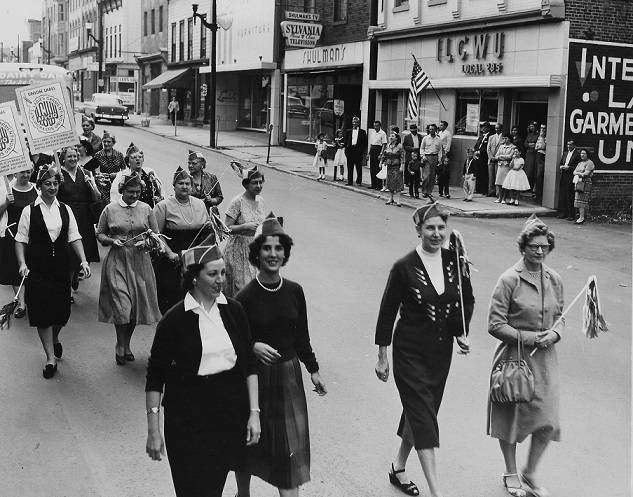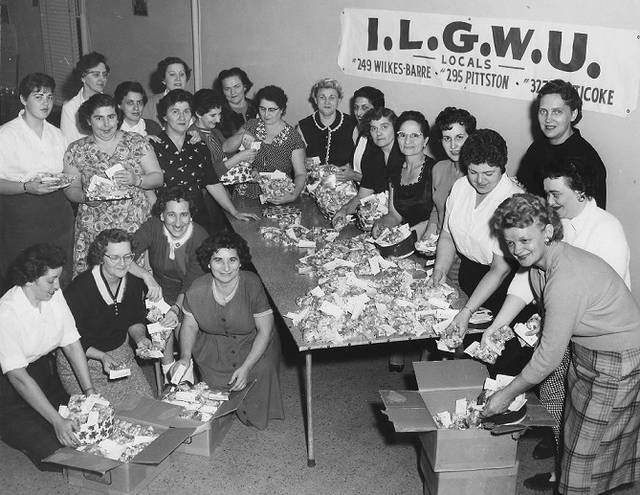Question
“Operation Dial, the direct dialing system, was launched in the Greater Pittston Area in August 1953, eliminating the need for switchboard operators. Many businesses advertised their brand new phone numbers in the Sunday Dispatch, all beginning with the telephone exchange OL. What did the OL stand for?
1953 – 65 YEARS AGO
The Irwin Freed Lodge B’nai B’rith sent a delegation of athletes to the Junior Olympics in Allentown. The Pittston team came in fourth in the standings. The Pittston girls won the top contest for the 120-yard relay. Betty Kirkpatrick Rosemary Knowles, Pauline Morton and Roberta Howells combined to give Pittston its win. Chuck Hill, of West Pittston, finished second in the 880-yard run, Tom Stout barely missed first place in the 75-yard dash and Bob Tambur took third in shot put.
Lighter in weight than previous editions, the 1953 Greater Pittston area phone book was ready for distribution. All the numbers listed were dial-operated with the exception of 1,900 telephones in the borough of Wyoming. The new directory had 300 pages and, although at six ounces, one ounce lighter than the previous year, contained 13,000 listings — quite a few more than the previous year. Pages were printed with four columns instead of three, making the phone book more compact. It was announced the telephone company would not collect old directories. In 2010, the New York State Public Service Commission granted Verizon permission to stop delivering business telephone books to its customers. Verizon estimated eliminating the printing would save 13,600 tons of paper per year from entering the waste system.
1966 – 52 YEARS AGO
Airman Daniel C. Vidlicka USN served aboard the Seventh Fleet attack aircraft carrier USS Constellation, stationed in the South China Sea off the coast of Vietnam. The North Vietnamese launched attacks on U.S. destroyers in the Gulf of Tonkin in August 1964; Constellation was deployed and was the first U.S. warship to launch strikes against North Vietnamese vessels and bases.”
1972 – 46 YEARS AGO
The 42nd reunion was being planned for the Erie Railroad Booster Club, an organization of retired and active employees of the locomotive and car departments of the Erie Railroad in Avoca. The club, active from 1932-1952, saw a decline in membership with the advent of diesel power and decline of steam powered trains. During its heyday, the club promoted railroad excursions from Avoca and Dunmore to Lake Ariel Amusement Park. It also held clambakes at Echo Lake along the Susquehanna River at Harding during the years 1930-35.
1974 – 44 YEARS AGO
Dom Cassetori, Wyoming Area cross country coach, announced the first girls running team would form and asked girls who enjoyed running to take advantage of the opportunity. The coach admitted girls had been fighting for equal rights in the sports world for many years. The mandate came from the federal law Title IX of the Education Amendments of 1972 enacted on June 23, 1972. In 2002, it was renamed the Patsy T. Mink Equal Opportunity in Education Act, in honor of its principal author Congresswoman Mink. The law requires equity in all educational and extracurricular matters in any school that receives federal funding.
1976 – 42 YEARS AGO
Biagio Dente was officially inducted into the Honor Society of the American Culinary Federation. Mr. Dente, along with his family, the Robert Luchetti family and Mrs. Helen Dente, traveled to Texas to receive a gold medal naming him Executive Chef. At the time, only 399 chefs held the distinction. During his trip, Chef Dente collected menus from 11 states. The American Culinary Federation, Inc. was founded in 1929 in New York City. According to the federation’s website, in 1976 “they changed the culinary industry by elevating the position of the executive chef from service status to the professional category in the U.S. Department of Labor’s Dictionary of Official Titles. Since this change, the culinary industry has grown tremendously.”
1978 – 40 YEARS AGO
Raymond Ciraola, of Pittston, was looking for information on an antique grass cutter he had in his possession. Although quite unusual looking with two long handles that crisscrossed at the top and a two foot blade-cutting apparatus at the bottom, Ciraola claimed it cut grass very well. It was even safe for his granddaughter Nadine Lombardo to use. Ciraola said the product had the word “Marta” along with a 1923 patent marking on its frame. Actually, the mower was a “Monta” sold by the Montamower Sales Co., of Grand Rapids, Mich. Bert Montague had purchased a factory in Michigan and planned to manufacture the mowers in 1917. The Montamower was patented in 1923 and was on the market until 1962. The mower sold for $15 in the 1920s, weighed less than 10 pounds and used a series of disc blades to cut grass and trim edges at the same time. It was identified by its unique cross-handle design.
1993 – 25 YEARS AGO
Gordon Ramsden, of Exeter, had an unusual hobby. In 1975, Gordon’s daughter gave her father a long stitch needlepoint set to occupy Gordon’s time during a hospital stay. Over the years, Gordon’s needlepoint work has been recognized by masters Doris Bowman, Hope Hanley, Deborah Harding and the Smithsonian Institute. His 5×8 Persian rug was exhibited in national competition at Woodlawn Plantation, Mt. Vernon, Virginia and a needlepoint rug featuring 50 state flowers was loaned to the National Botanical Gardens, in Washington D.C.
1996 – 22 YEARS AGO
Little League representatives Barry Przybyla, Hank Zielinski, of Wyoming/West Wyoming; Bob Smith and Mike Gerney, of Exeter; Norm Chapman, of Jenkins Township; Junior Bellanca, of Pittston; Jim Manganiello, of West Pittston; Joe Chimel and Mike Lokuta, of Avoca/Dupont; Pat Ratchford, of Duryea; and Art Savokinas, of Pittston Township, were busy planning the 21st annual Tournament of Little League Champions. Originally called the Vullo and Mall Merchants Tournament when it began in 1975, was in 1996 sponsored by Savo’s Pizza.
ANSWER
In 1953, The OL in front of a five digit telephone number stood for Olympic. With the inception of the direct-dial system, central offices were assigned to various communities which contained switching systems. These systems allowed a telephone customer to directly dial someone in their own or a neighboring community. Each central office had a maximum of 10,000 subscriber lines.
THIS DAY IN HISTORY
1763 — Colonel Henry Bouquet decisively defeats the Indians at the Battle of Bushy Run in Pennsylvania during Pontiac‘s rebellion.
1861 — Congress adopts the nation’s first income tax to finance the Civil War.
1892 — Harriet Tubman receives a pension from Congress for her work as a nurse, spy and scout during the Civil War.
1964 — President Lyndon Johnson begins bombing North Vietnam in retaliation for the Gulf of Tonkin incident and asks Congress to go to war against North Vietnam.
1992 — Four police officers are indicted on civil rights charges in the beating of Rodney King.
1997 — The mastermind of the 1993 World Trade Center bombing, Ramzi Yousef, goes on trial.
BORN TODAY
1850 — Guy de Maupassant, short story writer and author of “The Necklace”
1876 — Mary Ritter Beard, American historian and writer
1906 — John Houston, film director of such movies as “The Treasure of the Sierra Madre”and “The Maltese Falcon”
1930 — Neil Armstrong, the first man to walk on the moon
1975 — Ami Foster, television actress (Punky Brewster); nominated eight times for Young Actress Award






